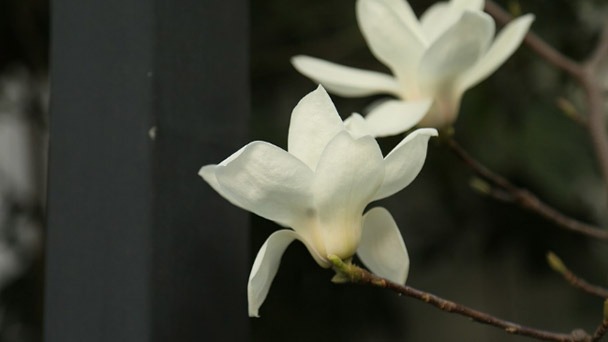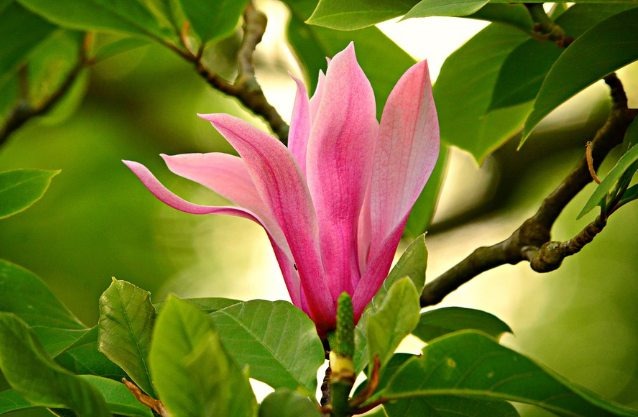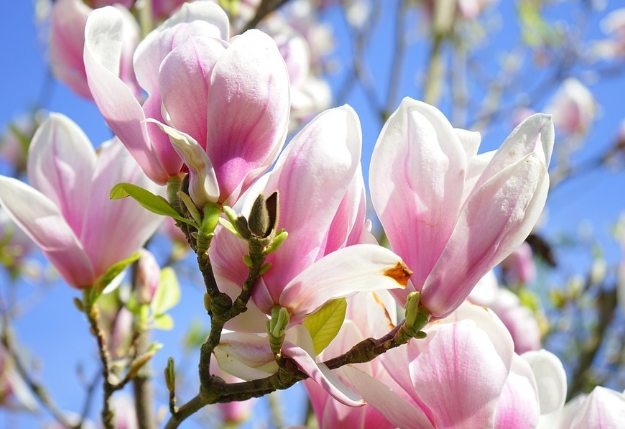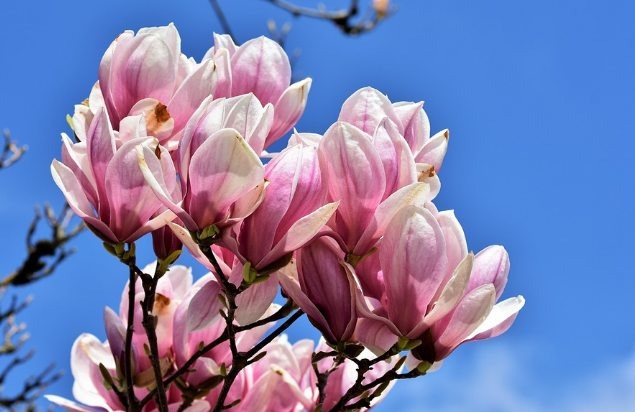When do Magnolias Bloom - Why is My Magnolia Tree Not Blooming
Written by Ivy
Jan 05 2023

The exceptionally lovely flowers of the magnolia are well known. Here, you can find out everything there is to know about magnolia blossoms, including what to do if they don't bloom.
When Do Magnolias Bloom?
There are numerous species of magnolias. They bloom from late winter to midsummer, typically from February to June, depending on the species of Magnolia and the environment in which it grows.
The yulan magnolias frequently bloom in the spring. It turns out that they resemble tiny little birds when their blossoms are in bloom. (Also Read: Yulan Magnolia Blossoms Bird-Shaped)
May and June see the blooming of a variety of magnolias, including the Sweet Bay and Southern magnolias, which have wide, cup-shaped petals. As it blooms from late March through the end of April, the Star Magnolia serves as a torchbearer for the arrival of warm weather. Discover the various varieties of Magnolia plants, their blooming cycle, and a care guide by watching this video.
Here are a few of the Magnolia blooming patterns according to where they are grown.

Texas
Due to Texas's warm climate and moderate winds, magnolias grow beautifully there. Along with some other common types of Magnolia plants, the Star Magnolia can be seen quite frequently. These typically bloom in the first few months of spring, from February to April.
The Star Magnolia, also known as Magnolia Stellate, thrives and blooms incredibly well in the environment of Texas. They are tiny plants with exquisite star-shaped flowers.
California
There are several hardiness zones in California, and a variety of Magnolia plants flourish there. There is no predetermined blooming time as a result. Californian magnolia trees have a variety of blooming seasons that vary depending on the species and the location. Although many species have different blooming times, they all occur between early and late spring, typically between March and April.
California is a very successful state for the hybrid Magnolia x soulangiana, also known as Saucer Magnolias. Hardiness levels five through eight are where you can find them. This is a rare variety of magnolia that can bloom twice—once in the spring and again in the summer.
Florida
For the growth of Magnolia trees, Florida's heat is ideal. Early to midsummer, or May to June, is when magnolias in Florida typically bloom. Florida is a perfect place for Magnolia grandiflora, also known as the Southern Magnolia. This Magnolia variety is a very laid-back plant in comparison to other varieties. It is enormous and doesn't mind a little bit of shade. This plant's roots are delicate, so it needs to be replanted with extreme care.
St. Louis
There are numerous Magnolia plants in St. Louis. Bracken's Black Beauty is one of the plants that can be found most frequently in these Southern regions. The summer months are when this plant blooms, and the tree's leaves are always present.
Here, Sweet Bay Magnolias also bloom in the summer, but in the winter, they lose their leaves. Missouri is home to a very rare species of Magnolia known as the cucumber tree, which produces tiny yellow-green flowers in April.
How Long Do Magnolias Bloom?
Typically, magnolia flowers do not live very long. They endure for roughly two weeks, even when given intensive care.
Before they wilt, the flowers on the plant remain there for almost two weeks. There are some early and late blooms in addition to the main flowering season.
Maintaining your magnolias properly is especially important when they are blooming. Give it lots of water to keep the flowers from wilting too early.
Do Magnolia Trees Bloom Every Year?
Yes, the magnolias are guaranteed to bloom every year provided they are the right age, in the right climate, and don't have any abnormalities. When a magnolia tree blooms, it typically continues to bloom for the rest of its life. There is only one exception to this rule: Magnolia plants that are unhealthy or recently planted.
Magnolia trees that have just been planted need a lot of energy to get settled in and make the necessary accommodations for healthy survival. Because of this, they devote all the energy needed for blooming to the settling process.
The same is true of damaged or crooked magnolia trees; they do not bloom. All of the plant's energy and resources are directed toward healing if it has been injured physically or has been harmed in any other way by pests, frosts, insects, etc.
How Do You Keep Magnolias Blooming?
By attending to their ideal needs, you can keep your magnolias in bloom.
Temperature
Extreme cold is too harsh for magnolias to endure. Warm weather and springtime are ideal for their bloom. By defending the bud from frost, you can maintain the blooming of your magnolias. A temperature drop between 20 and -10 degrees Celcius could harm your plant, so watch out for that.
Sunlight
Places with direct sunlight are ideal for magnolia flower blooming. They can survive in light shade, but full sunlight conditions yield the best results.
Soil
Rich, well-drained soil that is neutral to slightly acidic is ideal for magnolias. Magnolias may not bloom properly due to poor soil conditions.

Magnolia Not Blooming
A magnolia tree's failure to bloom can have a number of causes. It is usually only a matter of time, so you don't need to worry right away.
Possible Reasons for a Lack of Flowering
There are several causes for a lack of flowering in magnolias:
- The plant is too young: Magnolias must first grow in order to concentrate on producing flowers. Young magnolias are actually still children because flowers are basically only used for reproduction and require a lot of energy. A magnolia's first flowers may not appear for ten years. It also depends on whether the magnolia was grown from seed or cuttings, as well as the species and variety.
- Frost is the most common because for a failed magnolia bloom. Some winters are so chilly that the buds freeze. Due to how sensitive buds are right before and during flowering, late frosts can also cause this. Additionally, some species and varieties are not well enough tolerant of frost. Frost-sensitive species frequently stop flowering in response to harsh winters. If you fertilized your magnolia well into the fall the year before, flowering will be even more sensitive.
- Pruning: magnolia forms its buds for the coming year in early autumn. Therefore, if you pruned your tree too late, the magnolia would have stopped flowering. Radical pruning prevents the magnolia from flowering for a while as it needs time to heal and regain its strength.
- Autumn drought: It takes a lot of energy to form flowers, which is physically taxing. But most importantly, the magnolia requires a lot of water. The thick-fleshed leaves of a magnolia flower can be seen if you've ever looked at one up close. It takes a lot of water to do this. The plant won't receive enough water if autumn continues to be dry. After that, the magnolia grows instead of reproducing with the little water that is still available.
- The wrong location: The magnolia won't want to bloom if it is uncomfortable where it is. The location of your magnolia should be checked, so do that.
What to Do in the Absence of Flowering?
There can be as many different ways to promote blooming as there are causes for it. Determine which of the causes might be applicable to your magnolia first. Simply waiting will help if the problem is that your plant is too young. Here you can learn how to prune your magnolia properly if improper pruning the year before resulted in the absence of buds and flowers.
Things can be trickier when it comes to the weather. With a little more water in dry autumns, you can combat the autumn drought. It is best to accurately check your variety if frost is to blame. Your magnolia might not be able to withstand frosts well enough. If so, you might prefer to get a more resilient magnolia and give your plant to a friend or relative who lives in a slightly warmer climate. But in particularly chilly winters, even frost-tolerant varieties struggle. There is a chance that years will pass without a magnolia bloom even if you take into account all the factors in the best way possible.
Last but not least, confirming the location is helpful. Maybe the location of your magnolia is uncomfortable. The plant needs to be moved in this situation before it gets too big. However, bear in mind that even a change in location can stress the plant. Because it must first adapt to its new environment, your magnolia will almost certainly not bloom again the following year.
Good flowering is greatly influenced by proper maintenance. Compost or a slow-release fertilizer, like our Plantura All Purpose Plant Food, is advised because the magnolia should be provided with enough nutrients each year.
Can Magnolias Bloom Twice a Year?
Yes, magnolias can bloom twice a year, but that characteristic is extremely uncommon. The majority of magnolia species only produce flowers once per year, and that is during their blooming season. Some varieties of magnolias bloom twice—in April and July—once in the early spring and once in the late summer.
Magnolia x soulangeana, also known as the Chinese or Saucer Magnolia, is a variety of the tree that blooms twice a year.
How frequently the plant blooms is significantly influenced by the tree's species and health. You must be very picky when selecting a Magnolia tree if you prefer trees that bloom more than once.
Plants need a lot of upkeep, especially magnolias. They require precise caution if they are to blossom. Keep them in soil that receives plenty of sunlight—typically high, rich, and well-drained—and water them frequently.
How Old Does a Magnolia Tree Have to Be to Bloom?
The variety of a Magnolia tree determines when it must bloom. Some magnolia species do not bloom until they are ten years old, while others do so as early as three.
A 120-year lifespan is typical for magnolia trees. So it doesn't sound bad in principle to wait 10 years for them to bloom.
Are Magnolia Blossoms Edible?
Yes, there are many magnolia varieties with edible flowers, such as Magnolia grandiflora, Magnolia soulangeana, and Magnolia mexicana.
The flower petals can be used as a garnish or as an ingredient in salads. They have a ginger and cardamom-like flavor.
White magnolia flowers have the most subtle taste, while dark pink flowers have the strongest flavor.

How Do You Winterize a Magnolia Tree?
Many Magnolia trees are deciduous trees, which means they lose their leaves in winter, but some plants like the Southern Magnolia are an evergreen variety of Magnolia and never lose their leaves. However, this is not common in most Magnolias. If you want Magnolias that will remain leafy and green all year long, you should opt for evergreen Southern Magnolia.
Magnolias are the herald of warm weather, so they do not like harsh winters, especially untimely frost. If your Magnolias are in bloom already, but you are expecting frost, you can winterize the tree by mulching its bottom. If you have a tree that is small in size, cover it entirely.
A small number of frosts might not kill your Magnolia but it will severely damage it that is for sure. Especially younger blooms will be harmed majorly by this situation. Magnolias do not thrive in cold situations. They can tolerate all zones other than five through nine.
Depending upon the zone in which you live, you need to follow your magnolia care routine. If you are in zone seven. You do not need to worry about winterizing your plant. However, if you live in zone six and colder you should mulch your Magnolia and not fertilize in the off-season.
Some species like the Star Magnolia, which are hardy and strong, can survive through colder regions like zone four with little care and protection.
After the winter season is over, the threat of frost has passed. Followed by that comes the time to prune the tree carefully. Be sure not to over-prune your Magnolias as it will make the recovery difficult.
Do Potted Magnolias Bloom?
Small magnolia varieties such as Magnolia stellata will grow and flower well in containers.
Choose a large container with a wide base to prevent it from blowing over in strong winds and ensure that there are plenty of drainage holes in the bottom of the pot.
Use a good quality potting mix and fertilize when the buds begin to appear.
Conclusion
To recap, magnolia trees can bloom twice a year, but they usually do not. Varieties like the Chinese or saucer magnolia are more prone to blooming twice. So, choose a magnolia variety depending on your needs. Magnolia trees are prone to frost. When choosing a variety, location is key.
Finally, magnolia trees may not bloom at all, that is okay. If a magnolia tree does not bloom, it usually means it is recovering. Be patient and give your plant time to grow!
Latest Updated
- Benefits of Bugleweed - 7 Science-backed Health Benefits
- Bugleweed Dangers & Side Effects - Is It Poisonous?
- How to Plant Evergreen Trees - What You Should Know
- When to Plant Evergreens - Grow Guide for Evergreen Trees
- 12 Wonderful Evergreen Shrubs for Your Garden
- 12 Popular Evergreen Plants with Pictures for Beginners
- When And How To Prune A Lilac Bush Like a Pro
- How to Grow & Care for Lilac Vine (Hardenbergia Violacea)
- Japanese Lilac Tree (Syringa Reticulata) Care & Propagation Guide
- Shumard Oak Pros and Cons - What to Know
Popular Articles
- Winter maintenance of Antirrhinum Majus
- How to Grow Terminalia Mantaly Tree
- How to Grow and Care for Crossostephium Chinense
- How to grow Antirrhinum Majus in spring
- Peristeria Elata (Dove Orchid) Profile: Info & Care Guide
- Underwatered Snake Plant (Sansevieria Trifasciata) - Signs And How To Fix
- How to Care for Brazilian Jasmine Plant (Mandevilla Sanderi)
- How to Grow & Care for Graptopetalum Purple Delight in Summer
- Rosa Chinensis (China Rose): Plant Growing & Care Tips
- How to Care for Baby Sun Rose (Aptenia Cordifolia)